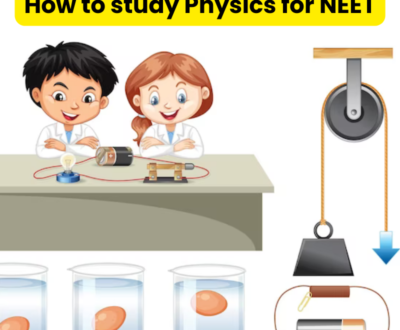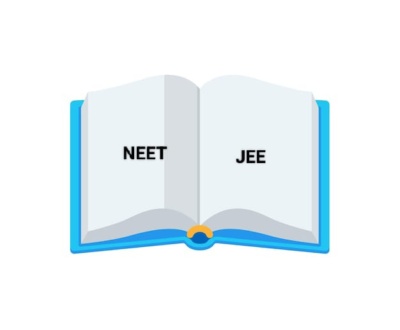Science NCERT Syllabus class 11, 12th (2023-24)
- June 22, 2023
- 11th and 12th (PCB and PCM)

The National Council of Educational Research and Training (NCERT) plays a pivotal role in shaping the curriculum followed by schools across India. Significant development has occurred in the science NCERT syllabus Class 11 and 12th-grade students. These revisions are intended to connect the curriculum with the fast-changing scientific world and provide students with the information and abilities needed to flourish in science.
NCERT has reduced roughly 30% of the syllabus for classes 6 to 12 and deleted “overlapping” or equivalent information in circumstances where the same or similar stuff was provided in lower or higher grades. Another purpose for rationalizing textbooks is to guarantee that they are user-friendly, accessible, and devoid of irrelevant material for students.
According to the Constitution’s eighth schedule, NCERT textbooks would be provided in at least 22 languages, including Hindi, English, Bengali, Assamese, Gujarati, Kannada, Sanskrit, Punjabi, Sindhi, Manipuri, Urdu, Malayalam, Odiya, Kashmiri.
In this blog we will discuss the deleted syllabus of science (physics, chemistry, biology) and Mathematics for 11th and 12th standards –
Changes to the NCERT Syllabus Class 11 and 12th for the School Year 2023-24 –
The changes made to the NCERT syllabus for Class 11 and 12 for the academic year 2023-24 are consistent with CBSE’s efforts to align it with the NEP 2020. CBSE Class 11 and Class 12 students would be able to study with a creative mentality if the subject load is reduced and chances for experiential learning are provided.
Mathematics | Deleted NCERT syllabus of Class 11
| Chapter | Chapter/topic deleted |
| Sets | Power Set Examples 31 to 34 and Questions 6-7 (Miscellaneous Exercise) are examples of practical issues relating to the union and intersection of two sets. Ques. 13–16 (Miscellaneous Exercise)The page’s final bullet point in the summary |
| Trigonometric Functions | Trigonometric Equations (up to Exercise 3.4)The final point in the page’s summary Proofs and Examples (simple application) of Sine and Cosine Formulae |
| Principle of Mathematical Induction | Full Chapter |
| Complex Number | Polar Representation of a Complex Number Quadratic Equation Example 11 and Exercise Examples 13, 15, 16Ques. 5–8, 9, and 13 (Miscellaneous Exercise)Last three points in the Summary Square-root of a Complex Number |
| Linear Inequalities; | Linear Inequalities in Two Variables Graphically Solved Solution of a Two-Variable Linear Inequality System Last three points in the Summary |
| Binomial Theorem ; | General Middle Terms Example 17 and Ques.1–3, and 8 (Miscellaneous Exercise)Last two points in the Summary |
| Sequences and Series; | Arithmetic Progression (A.P.) (up to Exercise 9.2)Sum to n terms of Special Series Examples 21, 22 and 24Ques.1-6, 12, 15, 16, 20, 23, and 26 (Miscellaneous Exercise)Points 3 and 4 in the Summary |
| Straight Lines | Collinearity of Three Points (Examples 4–5 and Ques. 8, 13–14 in Exercise 10.1)Normal Forms Ques. 8 in Exercise 10.2General Equation of a Line Ques. 3 in Exercise 10.3Ques. 2 (Miscellaneous Exercise)Fourth Last Point in the Summary Equation of a Line Family Passing Through the Intersections of Two Lines;Shifting of Origin |
| Conic Sections | Special Cases of an Ellipse; |
| Introduction to Three-Dimensional Geometry; | Section Formula Exercise 12.3 Ques. 4 and 5 (Miscellaneous Exercise),Last Three Points in the Summary |
| Mathematical Reasoning | Full Chapter |
| Statistics; | Analysis of Frequency Distribution Question 6 (Miscellaneous Exercise) and the final point of the Summary |
| Probability | Introduction Random Experiment First Two Points in the Summary |
Physics ( Part 1 and Part 2 ) | Deleted NCERT syllabus of Class 11
| Chapter | Chapter/topic deleted |
| Physical World | What is Physics? Scope and Excitement of Physics Physics, Technology, and Society Fundamental Forces in Nature Nature of Physical Laws |
| Units and Measurements; | Measurement of Length Measurement of Mass Measurement of Time Accuracy, Precision of Instruments, and Errors in Measurement Exercises 2.13, 2.14,2.19–2.22, 2.24–2.33 |
| Motion in a Straight Line | Position, Path Length, and Displacement Average Velocity and Average Speed Relative Velocity Exercises 3.5, 3.7–3.9, and 3.23–3.28Appendix 3.1 |
| Motion in a Plane | Relative Velocity in Two Dimensions Exercises 4.12–4.14;4.26–4.32 |
| Laws of Motion | Exercises 5.24–5.40 |
| Work, Energy, and Power | Various Forms of Energy: the Law of Conservation of Energy Exercises 6.24–6.29 |
| System of Particles and Rotational Motion | Theorems of Perpendicular and Parallel Axes Rolling Motion Exercises 7.10, 7.18–7.19,7.21–7.33 |
| Gravitation; | Geostationary and Polar Satellites Weightlessness Exercises 8.3–8.5, 8.22–8.25 |
| Mechanical Properties of Solids | Elastic Behaviour of Solids Determination of Young’s Modulus of the Material of a Wire Exercises 9.17 – 9.21 |
| Mechanical Properties of Fluids | Venturi-meter Blood Flow and Heart Attack Detergents and Surface Tension Exercises 10.21–10.31 |
| Thermal Properties of Matter | Greenhouse Effect Exercises 11.21 – 11.22 |
| Thermodynamics | Heat Engines Refrigerators and Heat Pumps Exercises 12.7 and 12.10 |
| Kinetic Theory | Specific Heat Capacity of Water Exercises 13.11–13.14 |
| Oscillations | Damped Simple Harmonic Motion Forced Oscillations and Resonance Exercises 14.16 (p. 365), 14.20–14.25 |
| Waves | Doppler Effect Exercises 15.20–15.27 |
Chemistry ( Part 1 and Part 2 ) | Deleted NCERT syllabus of Class 11
| Chapter | Chapter/topic deleted |
| States of Matter: Gases and Liquids | Full chapter |
| Hydrogen; | Full chapter |
| s-Block Elements; | Full chapter |
| Some p-Block Elements | Full chapter |
| Environmental Chemistry | Full chapter |
Biology | Deleted NCERT syllabus of Class 11
| Chapter | Chapter/topic deleted |
| The Living World | What is ‘Living’? Taxonomical Aids Botanical Gardens Museum Zoological Parks Summary (Para 2)Question no. 10 |
| Plant Kingdom; | Angiosperms Plant Life Cycles and Alternation of Generations Summary (Para 5 and 6)Question no. 10 |
| Morphology of Flowering Plants; | Modifications of Root Modifications of Stem Modifications of Leaves, Fabaceae, Liliaceae Question No. 1, 2, 6(b), 8, 9, 12, and 14 |
| Anatomy of flowering Plants | The Tissues Meristematic Tissues Simple Tissues (Para 2, 3)Complex Tissues (Para 4)Secondary Growth Vascular Cambium Activity of the Cambial RingSpring Wood and Autumn WoodHeartwood and SapwoodCork Cambium Secondary Growth in Roots Question no 1, 2, 3, 7, 11 |
| Structural Organization in Animals | Animal Tissues Epithelial Tissue Connective Tissue Muscle Tissue Neural TissueEarthwormMorphologyAnatomyCockroachMorphologyAnatomySummary (Para 2, 3, 4)Question Numbers 1 (b, c), 2(c), 4, (c, d), 5, (e, f, g, h), and 6 (b, c), respectively 7, 8(b, c), 9(c), 10(a), 11(c, d), and 12(d, c) |
| Biomolecules | Nature of Bond Linking Monomers in a Polymer Dynamic State of Body Constituents—Concept of Metabolism Metabolic Basis for Living The Living State Question no 2, 3, 5, 8, 10 |
| Transport in Plants | Full Chapter |
| Mineral Nutrition | Full Chapter |
| Digestion and Absorption | Full Chapter |
| Plant Growth and Development; | Photo periodism Vernalisation Seed Dormancy Question no 3, 5, 8, 10 |
| Neural Control and Coordination; | 5 Reflex Action and Reflex Arc Sensory Reception and Processing Eye Parts of an Eye Mechanism of Vision The Ear Mechanism of Hearing Summary (para 3 and 4)Question no 1 (b, c), 2 (c),4, (c, d), 5 (e, f, g, h), 6 (b, c), 7, 8 (b, c), 9 (c), 10 (a),11, 12 (c, d) |
Class 12: NCERT deleted syllabus of Mathematics –
| Chapter | Chapter/topic deleted |
| Relations and Functions | Composition of Functions and Invertible Function (up to ‘This leads to the following definition’) Whole Pages Examples 24 and 25 Full Pages Examples 45 and 49 and Ques. 12 and 13Ques. 1–3, 6–7, 9, 11–14, 18–19Summary Points 11–13 and 15–19 |
| Inverse Trigonometric Functions | Properties of Inverse Trigonometric Functions (Except sin sin , , − ( ) = ∈[ ] − 1 x x x 1 1 ( ) 1 sin sin x x ,x , 2 2 − π π = ∈− ); Examples 4, 7, and 8;Alternative Solution of Example 5 Ques. 3, 4, 6, 12, 14, 15 Examples 10, 11, 12, 13 Ques. 8, 12, 17 (Miscellaneous Exercise)Summary Points 8–13 |
| Matrices | Elementary Operations (Transformation) of a Matrix 3.8.1Inverse of Matrices by Elementary Operations (Retain Ques. 18 of Exercise 3.4);List of Class XII Textbook Rationalised Content Example 26 Ques. 1–3 and 12 (Miscellaneous Exercise);Third Last Point of Summary |
| Determinants | Properties of Determinants Miscellaneous Examples 30–32 and 34Ques. 2, 4–6, 11–15, and 17 (Miscellaneous Exercise)Summary Points 4–11 |
| Continuity and Differentiability | Examples 22 and 23, Example 27Mean Value Theorem Exercise 5.8 and Miscellaneous Example 44 (ii)Questions 19 (Miscellaneous Exercise) and 5 (derivatives of cot-1x, sec-1x, and cosec-1x), 7, and 8 from the Summary |
| Application of Derivatives | Tangents and Normals 6.5 Approximations Examples 45, 46 Ques. 1, 4–5, and 20–24 (Miscellaneous Exercise)Points 4–10 in the Summary |
| Integrals | Points (xi)–(xiii) in the List of Derivatives Geometrical Interpretation of Indefinite Integral Comparison between Differentiation and Integration Type of Integral Definite Integral as the Limit of a Sum Ques. 19, 32, 40 and 44Point 2 in Some Standard Integrals’ Summary(xiv) and (xv) |
| Application of Integrals | The Area of the Region Bounded by a Curve and a Line Ques. 3 and 6–11 in Exercise 8.1Area between Two Curves Examples 11, 13 and 14Ques. 2–3, 6–7, 8–15, 18–19 (Miscellaneous Exercise)Last Two Points of the Summary |
| Differential Equations | Formation of Differential Equations with a Given General Solution Example 25 Ques. 3, 5, and 15 (Miscellaneous Exercise),Point Six of the Summary |
| Vector Algebra | Scalar Triple Product Coplanarity of Three Vectors |
| Three Dimensional Geometry | Relation between the Direction Cosines of a Line Equation of a Line Passing through Two Given Points, Ques. 8–9 (Exercise 11.2)Plane Coplanarity of Two Lines Angle between Two Planes Distance of a Point from a Line Angle between a Line and a Plane Ques. 1, 2, 5, 7–8, 10–19,21–23 (Miscellaneous Exercise)Summary Points 13, 20–24 Full Pages |
| Linear Programming | Different Types of Linear Programming Problems;Summary Points 2–9 |
| Probability | Random Variables and Its Probability Distributions Examples 22 and 23ProbabilityDistribution of a Random Variable Mean of Random Variables Variance of a Random Variable Bernoulli Trials and Binomial Distribution Ques. 5–7, 9–11 (Miscellaneous Exercise)Last 3 Points of the Summary |
Class 12: NCERT deleted syllabus of Physics (Part 1 and Part 2) –
| Chapter | Chapter/topic deleted |
| Electric Charges and Fields | Electric Charge (just paper strip activity and building an electroscope, remove)Conductors and Insulators (just the earthing idea should be deleted)Charging by Induction Exercises 1.13, 1.25 –1.34 |
| Electrostatic Potential and Capacitance | Energy stored in a Capacitor (only derivation, remove)Exercises 2.12 to 2.36 |
| Current Electricity; | Resistivity of Various Materials (remove Tables for Carbon Resistors and Carbon Resistor Colour Code)Combinations of Resistors – Series and Parallel Example 3.5Meter Bridge Potentiometer Exercises 3.3, 3.4, 3.10,3.12, 3.14–3.23 |
| Moving Charges and Magnetism; | Table 4.1Velocity Selector Cyclotron The Toroid The Magnetic Dipole Moment of a Revolving Electron Exercises 4.14–4.28 |
| Magnetism and Matter | Bar Magnet as an Equivalent Solenoid (remove only mathematical treatment)The Dipole in a Uniform Magnetic Field (just remove the mathematical analysis)Earth’s Magnetism Magnetic Declination and Dip Table 5.2Paramagnetism (delete only Curie’s Law)Ferromagnetism (delete only Curie’s temperature; and Hysteresis)Permanent Magnets and Electromagnets Exercises 5.1, 5.2, 5.9–5.11, 5.13–5.25 |
| Electromagnetic Induction; | Energy Consideration: A Quantitative; Study 6.8 Eddy Currents; Exercises 6.6, 6.10–6.17 |
| Alternating Current; | Figure 7.7 shows how an inductor becomes magnetised and demagnetized Figure 7.10 Charging and Discharging of a Capacitor7.6.2 Analytical Solution (of series LCR circuit);Resonance (deleted only Sharpness of Resonance)LC Oscillations Exercises 7.6, 7.8, 7.10,7.12–7.26 |
| Electromagnetic Waves | Example 8.18.3.2 The Nature of Electromagnetic Waves (remove only the paragraphs on page 277 and ether)Examples 8.4 and 8.5Exercises 8.11–8.15 |
| Ray Optics and Optical Instruments | Refraction ( only delayed sunset and advanced sunrise removed)Mirage Diamond Some Natural Phenomena due to Sunlight The Rainbow Scattering of Light Exercise 9.18 |
| Wave Optics | Doppler Effect Example 10.1Young’s Experiment and Interference of Light Waves (retain final equations for dark and brilliant fringes but remove derivation and expression for fringe width)Diffraction (retain only qualitative treatment)Resolving Power of Optical Instruments Validity of Ray Optics Polarization by Scattering Polarization by Reflection Exercises 10.7–10.21 |
| Dual Nature of Radiation and Matter | Table 11.1Example 11.3Wave Nature of Matter (remove just the Heisenberg uncertainty principle and the de Broglie wavelength of an accelerating electron)Davisson and Germer Experiment Appendix 11.1 The History of Wave-Particle Flip-Flop Exercises 11.5, 11.7, 11.12 to 11.14, 11.16, 11.17, and 11.19 to 11.37 |
| Nuclei | Law of Radioactive Decay Alpha Decay Beta Decay Gamma Decay Nuclear Reactor Exercises 13.1, 13.2,13.6–13.10,13.12–13.14,13.18, 13.22–13.31 |
| Atoms | Spectral Series Bohr Model of the Hydrogen Atom( Delete the derivation and simply keep the formula for the radius of the nth possible orbit)The Hydrogen Atom’s Line Spectra (retain just qualitative treatment)Example 12.6Exercises 12.3,12.11–12.17 |
| Semiconductor Electronics: Material Devices and Simple Circuits | 14.8 Special Purpose p-n junction Diodes Digital Electronics and Logic Gates Exercises 14.7–14.15 |
Class 12: NCERT deleted syllabus of Chemistry (Part 1 and Part 2)
| Chapter; | Chapter/topic deleted |
| The Solid State; | Full Chapter |
| Surface Chemistry | Full Chapter |
| General Principles and Processes of Isolation of Elements | Full Chapter |
| The p-Block Elements | Full Chapter |
| Polymers | Full Chapter |
| Chemistry in Everyday Life | Full Chapter |
Class 12: NCERT removed the Biology curriculum –
| Chapter; | Chapter/topic deleted |
| Reproduction in Organisms | Full chapter; |
| Strategies for Enhancement in Food Production; | Full chapter; |
| Organisms and Populations | Organism and Its Environment Major Abiotic Factors Responses to Abiotic Factors Adaptations ,Summary (para 2)Ques. 1, 2, 3, 9, 10, 11, and 12 |
| Ecosystem | Ecological Succession Succession of Plants Nutrient Cycling Ecosystem – Carbon Cycle Ecosystem – Phosphorus Cycle Ecosystem Services |
| Environmental Issues | Full Chapter |
Advantages of the revised syllabus | Deleted NCERT syllabus of Class 11
- Less work to do and less stress – Less content will need to be covered, which will reduce stress and help students learn and remember more. Instead of covering excessive content, students may concentrate more on comprehending and mastering the main topics with a reduced curriculum. This promotes a healthier and more effective learning environment, which benefits kids’ academic performance.
- More time to learn deeply – A smaller syllabus will enable teachers to teach in greater detail and give students more time to investigate and comprehend each idea. Better retention and comprehension will result from this.
- An increase in motivation and confidence – A condensed syllabus is also suitable for students’ motivation. When students have a sense of powerlessness due to the overwhelming amount of study material, it can be demotivating. Students will learn more quickly and effectively with less material to study, which will boost their confidence.
- Improved Learning Results – A smaller curriculum can result in better learning results because it enables a more specialized and targeted approach to instruction. Students may have better knowledge and experience higher academic achievement due to a concentrated and targeted curriculum.
Disadvantages of the revised syllabus | Deleted NCERT syllabus of Class 11
- Knowledge Gap – While the syllabus deductions may reduce some tension, they will also cause knowledge gaps. Eliminating some subjects might leave out important ideas and viewpoints that are necessary for a comprehensive understanding.
- preparation for competitive exams – Since the items that are deleted from the curriculum are retained on the competitive test syllabus, a reduced amount of study for competitive examinations may occur. Students may miss important subjects covered in these tests.
- Lower Academic Standards – The effectiveness of pupils’ learning is significantly impacted when topics are cut or skipped entirely. The quality and depth required for students to acquire critical thinking and analytical abilities can be challenging to sustain in courses with a condensed educational curriculum.
- Weightage Increase – However, the total amount of exam marks is not decreased along with the syllabus. The weighting of subjects will thus be raised now for the same 100 points. For example, if a chapter formerly carried a weight of 3 marks, it would now carry 10 points because the syllabus and themes are smaller, and questions would need to grow from the same topics.
Wrapping up…
In conclusion, the revisions made to the NCERT syllabus for science and mathematics in the 11th and 12th grades represent a substantial advancement in modernizing and improving the educational experience for students.
Students strengthen their critical thinking, problem-solving skills, and creativity via participation in practical experiments, case studies, and projects.
The updated curriculum also focuses a big emphasis on practical skills, encouraging experimentation, data analysis, and a scientific mindset. Mathematical reasoning and analytical abilities are developed through problem-solving activities and real-world situations. Students need these practical abilities to succeed academically and in their future employment.
More Articles –
Best Career Options After 12th Science in India
NEET or JEE: Which is tough to crack
Rajasthan BSc Nursing admissions 2023
FAQ’s regarding Science NCERT Syllabus class 11, 12th (2023-24) –
Q. What is the difference between CBSE and NCERT syllabus for class 11?
The foundational syllabus is the NCERT Class 11 syllabus, from which CBSE and other state boards derive their curriculum.
Q. What books can be used to complete the CBSE class 11 syllabus?
When creating the CBSE class 11 syllabus, specialists thoroughly analyse exam patterns, contemporary trends, and applicability. Students must first cover their NCERT textbooks and then solve extra questions from the NCERT exemplar, prepared by the CBSE. Certain books are popular among students for exam preparation. These include RD Sharma for Mathematics, HC Verma for Physics, Pradeep’s Chemistry course, Pradeep’s Biology, etc.
Q. Is there a connection between the Class 11 and Class 12 curricula for the CBSE board exam?
No, 11th Class syllabus questions will not be asked in CBSE Class 12. But various concepts are interrelated.
Q. Does the CBSE Class 11 curriculum for 2022–2023 similarly have two terms?
No, there will only be one annual exam for the 2022–2023 CBSE Class 11 session. The syllabus will not be divided into Term 1 and Term 2.
Q. Is the CBSE Science NCERT curriculum heavily weighted towards practical work?
A significant portion of the CBSE Science curriculum involves practical work. It aids in the growth of practical abilities, the strengthening of theoretical ideas, and understanding of the use of scientific principles. To perform well on the practical exams, pay close attention to the practical exercises, keep a lab diary, and practise running experiments.
Q. Are the CBSE Science NCERT textbooks sufficient for board exams?
The CBSE Science NCERT textbooks are considered the primary resource for studying and preparing for the board exams. They provide a strong foundation and cover the essential concepts. However, it is also beneficial to refer to additional study materials and practice sample question papers to enhance your understanding and exam preparation.
Q. What method should I use to study the CBSE Science NCERT curriculum?
It is suggested to begin by reading through and understanding the ideas presented in the NCERT textbooks. Make notes, underline critical passages, and practise resolving the problems presented in the textbook’s exercises and examples. If necessary, add to your research with additional reference books and online sources.
Q. How is the CBSE Science NCERT syllabus structured?
The syllabus is divided into different units and chapters, with each chapter focusing on specific topics within the subject. The syllabus includes both theoretical concepts and practical aspects.
Q. What are the deleted topics of Class 11 Physics?
The concepts of heat, temperature, heat transfer via conduction, convection, and radiation, as well as the heat engine and refrigerator, have been removed from Class 11 Physics.
More from our blog
See all postsRecent Posts
- How to Study Physics for NEET August 3, 2023
- MBBS admission through management quota July 13, 2023
- NCERT books for NEET-Physics, Chemistry, Biology July 13, 2023










Pingback: NCERT books for NEET-Physics, Chemistry, Biology - Studytok
Pingback: NEET or JEE: Which is tough to crack - Studytok
Pingback: NEET Coaching in Jaipur- Studytok